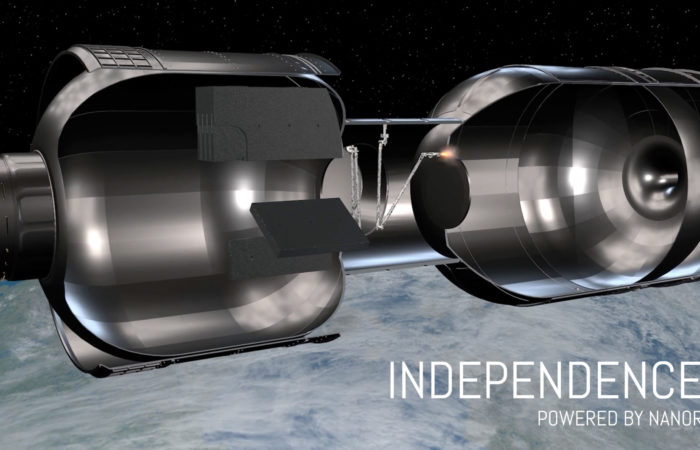Dear Friends,
I am excited to share that NanoRacks is releasing today our recent NASA-funded Low-Earth Orbit (LEO) Commercialization study.
The LEO Commercialization Study came out of the Administration and NASA’s efforts to understand the role of the private sector in creating a sustainable LEO marketplace, allowing NASA to focus its energies going forward to the Moon and onwards to Mars. NanoRacks was one of 12 companies selected to participate in this study.
For our study in particular, we worked with incredible partners, including:
United Launch Alliance (ULA) – LEO Village
Terminal Velocity Aerospace – Payload Return
Stratolaunch Systems Corporation – MLV Repurposing for Outpost Applications
Lunar Resources – In-space manufacturing
Space BD – Collaboration on Satellite Deployment
Olis Robotics -Telerobotic Operations
Made In Space – In-space Manufacturing
Space Adventures – Space Tourism
Altius Space Machines – Proximity Operations and Space Tugs
Deep Space Industries – Orbital Maneuvering
Kongsberg Satellite Services – Ground Station Coordination
Marsh – Insurance Analysis
Oliver Wyman – Risk Analysis
University of Chicago, Booth School of Business (Peter North) – Financial Analysis
Today we are at the crux of defining the role of commercial space as we consider the eventual end of the International Space Station in order to assure there is no United States space station gap. No one company is going to succeed on their own. Commercial space survives if we develop an ecosystem, full of multiple providers, a world-wide customer base, and government and regulatory support. So why should we at NanoRacks keep this study a secret?
This four-month study was made possible thanks to the incredible, and diverse, team of partners we had on board. We studied the commercial case for the re-purposing of in-space hardware, specifically the upper stages of launch vehicles, via our NanoRacks Space Outpost Program. NanoRacks and our team defined the market, policy, and contractual ecosystems required for the commercial sustainability of the Outpost Program – both as autonomous and human-habitable platforms.
Of note, our study included a lot of proprietary information, from NanoRacks and our partners. This sensitive information has been redacted.
This is not the first time NanoRacks has sought to push market development via transparency. Back in 2009, NanoRacks was the first company to own, operate and market our own hardware and services on the Space Station. A sizeable commercial risk. When we first came up with the idea for our NanoLab, we made a conscious decision not to patent the concept of a standardized “space lab on a platform.” Why? Because we wanted even then to foster an ecosystem on the under-utilized International Space Station. I understood our larger plan was to operate commercial space outposts, and I needed to make sure there was a thriving ecosystem for payloads and research. In short, I didn’t want a monopoly. That is not healthy in any market. That critical decision led to the growing ecosystem we have on the Space Station today that provides modular payload services, including Space Tango in the States and ICE Cubes in Europe. Yes, competition, but hopefully from that competition comes a far larger marketplace if the policies are optimized correctly. We have grown considerably from our early focus on one product, but the philosophy remains the same.
It is in that spirit that we are realizing a major portion of our study. NanoRacks and our partners worked very hard to capture the essential hurdles in LEO commercialization and what we see as the solutions. We strongly debated amongst ourselves the price points, stability of NASA as customer (even when one among many), and international competition from other space agencies.
Also critical for us was the recognition that we cannot rely on any one company. Look at commercial cargo. Imagine if NASA had chosen one company to handle the space station cargo? How many remember that the first company chosen was Kistler Aerospace? Instead, there at first were two, and now three companies. We need the same for in-space destinations – and not only platforms that are attached to the ISS, but free flyers as well. First these free flyers will live close to Station, and soon enough, in differing orbits. A vibrant ecosystem is the only way we can obtain the goal of a legitimate, fledgling marketplace in low-Earth orbit.
We had wonderful cooperation from NASA in this study, in which the Agency took part in our simulation exercise and actively provided feedback. Given all this, it became common sense to release the report in the largest capacity that we could.
You can access our study here.
Enjoy.
Sincerely,
Jeffrey
Jeffrey Manber
CEO, NanoRacks
About NanoRacks
NanoRacks LLC, an XO Markets company, is the world’s leading commercial space station company. NanoRacks believes commercial space utilization will enable innovation through in-space manufacturing of pharmaceuticals, fiber optics – and more, allow for transformational Earth observation, and make space a key player in finding the solution to Earth’s problems.
Today, the company offers low-cost, high-quality solutions to the most pressing needs for satellite deployment, basic and educational research, and more –in over 30 nations worldwide. Since 2009, Texas-based NanoRacks has truly created new markets and ushered in a new era of in-space-services, dedicated to making space just another place to do business.
In 2017, the Company announced their long-term plans via the NanoRacks Space Outpost Program. This program is dedicated to the repurposing of the upper stages of launch vehicles in-space and converting these structures into commercial habitats, both humanly and robotically tended, throughout the solar system.

